ASTRONAUT CHARLES DUKE’S SPACE SUIT CUFF CHECKLIST. Cuff checklist, comprising 29 thin plastic printed leaves, spiral-bound and attached to a 7-inch curved metal wrist band ("P/N SEB 33100302-302, S/N 1025"). Each leaf 3½ inches square and with a reference tab on the fore-edge, 2 also with tabs on the top-edge (for immediate access to EVA 3 activities and EMU malfunction trouble-shooting steps). The wrist band has an 18-inch Velcro strap ("P/N SEB 12100030-201, S/N 1087 ASSY"). The whole assembly mounted on a wooden base with plaque reading: "Presented to Fred Haise, EVA cuff checklist, with warmest personal regards from the crew of Apollo 16." The cuff checklist used by Lunar Module Pilot Charles Duke, Jr., during the second and third lunar surface explorations of the Apollo 16 mission. It was exposed directly to the lunar environment for over 12 hours during those exploration periods, and continued the tradition of bringing a smile to the astronauts' faces while providing back-up plans for the first lunar "Grand Prix." Apollo 16, flown in April 1972, was the fifth lunar landing mission, and targeted the Descartes region of the moon, some 250 miles southwest of the Apollo 11 Tranquility Base site. This area was the first true highland region of the moon visited by Apollo astronauts and has brightly rayed craters with structural features similar to volcanic areas on the earth. Astronauts John Young and Charles Duke were scheduled to spend 73 hours at the Descartes landing site and to perform three EVAs. Just prior to the Lunar Module's descent from lunar orbit down to the landing site, the Command/Service Module developed problems associated with its large rocket engine, known as the Service Propulsion System (SPS). Since the SPS was the only means to leave lunar orbit and return to Earth, the lunar landing was delayed about six hours until the situation was deemed safe to continue the planned mission. This curtailed the overall lunar stay to 71 hours. Apollo mission planners were well aware of the importance of making every minute productive while astronauts explored the lunar surface. Neil Armstrong and Buzz Aldrin had a single "page" made of space suit material and placed directly on the left arms of their space suits, listing their surface activities. This was adequate for a single 2 ½ hour EVA, but the flights starting with Apollo 12 planned for at least 2 separate EVAs lasting at least 4 hours each. With the lunar rover flights of Apollos 15, 16, and 17, the exploration times were extended to 7 hours and 3 EVAs. In order to make certain the lunar explorers did not overlook planned tasks, spiral-bound cuff checklists were created to provide a detailed script of each task or activity. This put all the complex procedural steps of an EVA at the astronaut's fingertips. Young and Duke each had two individual cuff check lists for this mission, one for EVA 1 with the ALSEP deployment, and the present checklist for EVAs 2 and 3, which focuses on the true exploration and sample-gathering objectives. The cover of the present checklist features a black and white Apollo 16 crew emblem. The verso has the printed signatures of those who prepared and approved this checklist, including Charles Duke, and the title "Apollo 16 EVA 2 & 3, Lunar Surface Cuff Checklist LMP." A date of 3/20/72 and LMP ascending page numbers are printed in the inner margin. Eleven and a half leaves are devoted to tasks associated with EVA 2. Two leaves cover steps associated with space suit connections prior to venting the LM's cabin atmosphere. That venting allowed the front hatch to open and the next steps of climbing down to the lunar surface. Once the preparations were completed around the LM and the lunar rover loaded, the crew found a special drawing on the next leaf. It features a drooling space-suited astronaut melting away in the arms of a buxom nude woman. The astronaut says: "Happy Birthday Whatever Your Name Is." This gag illustration continues the t
ASTRONAUT CHARLES DUKE’S SPACE SUIT CUFF CHECKLIST. Cuff checklist, comprising 29 thin plastic printed leaves, spiral-bound and attached to a 7-inch curved metal wrist band ("P/N SEB 33100302-302, S/N 1025"). Each leaf 3½ inches square and with a reference tab on the fore-edge, 2 also with tabs on the top-edge (for immediate access to EVA 3 activities and EMU malfunction trouble-shooting steps). The wrist band has an 18-inch Velcro strap ("P/N SEB 12100030-201, S/N 1087 ASSY"). The whole assembly mounted on a wooden base with plaque reading: "Presented to Fred Haise, EVA cuff checklist, with warmest personal regards from the crew of Apollo 16." The cuff checklist used by Lunar Module Pilot Charles Duke, Jr., during the second and third lunar surface explorations of the Apollo 16 mission. It was exposed directly to the lunar environment for over 12 hours during those exploration periods, and continued the tradition of bringing a smile to the astronauts' faces while providing back-up plans for the first lunar "Grand Prix." Apollo 16, flown in April 1972, was the fifth lunar landing mission, and targeted the Descartes region of the moon, some 250 miles southwest of the Apollo 11 Tranquility Base site. This area was the first true highland region of the moon visited by Apollo astronauts and has brightly rayed craters with structural features similar to volcanic areas on the earth. Astronauts John Young and Charles Duke were scheduled to spend 73 hours at the Descartes landing site and to perform three EVAs. Just prior to the Lunar Module's descent from lunar orbit down to the landing site, the Command/Service Module developed problems associated with its large rocket engine, known as the Service Propulsion System (SPS). Since the SPS was the only means to leave lunar orbit and return to Earth, the lunar landing was delayed about six hours until the situation was deemed safe to continue the planned mission. This curtailed the overall lunar stay to 71 hours. Apollo mission planners were well aware of the importance of making every minute productive while astronauts explored the lunar surface. Neil Armstrong and Buzz Aldrin had a single "page" made of space suit material and placed directly on the left arms of their space suits, listing their surface activities. This was adequate for a single 2 ½ hour EVA, but the flights starting with Apollo 12 planned for at least 2 separate EVAs lasting at least 4 hours each. With the lunar rover flights of Apollos 15, 16, and 17, the exploration times were extended to 7 hours and 3 EVAs. In order to make certain the lunar explorers did not overlook planned tasks, spiral-bound cuff checklists were created to provide a detailed script of each task or activity. This put all the complex procedural steps of an EVA at the astronaut's fingertips. Young and Duke each had two individual cuff check lists for this mission, one for EVA 1 with the ALSEP deployment, and the present checklist for EVAs 2 and 3, which focuses on the true exploration and sample-gathering objectives. The cover of the present checklist features a black and white Apollo 16 crew emblem. The verso has the printed signatures of those who prepared and approved this checklist, including Charles Duke, and the title "Apollo 16 EVA 2 & 3, Lunar Surface Cuff Checklist LMP." A date of 3/20/72 and LMP ascending page numbers are printed in the inner margin. Eleven and a half leaves are devoted to tasks associated with EVA 2. Two leaves cover steps associated with space suit connections prior to venting the LM's cabin atmosphere. That venting allowed the front hatch to open and the next steps of climbing down to the lunar surface. Once the preparations were completed around the LM and the lunar rover loaded, the crew found a special drawing on the next leaf. It features a drooling space-suited astronaut melting away in the arms of a buxom nude woman. The astronaut says: "Happy Birthday Whatever Your Name Is." This gag illustration continues the t
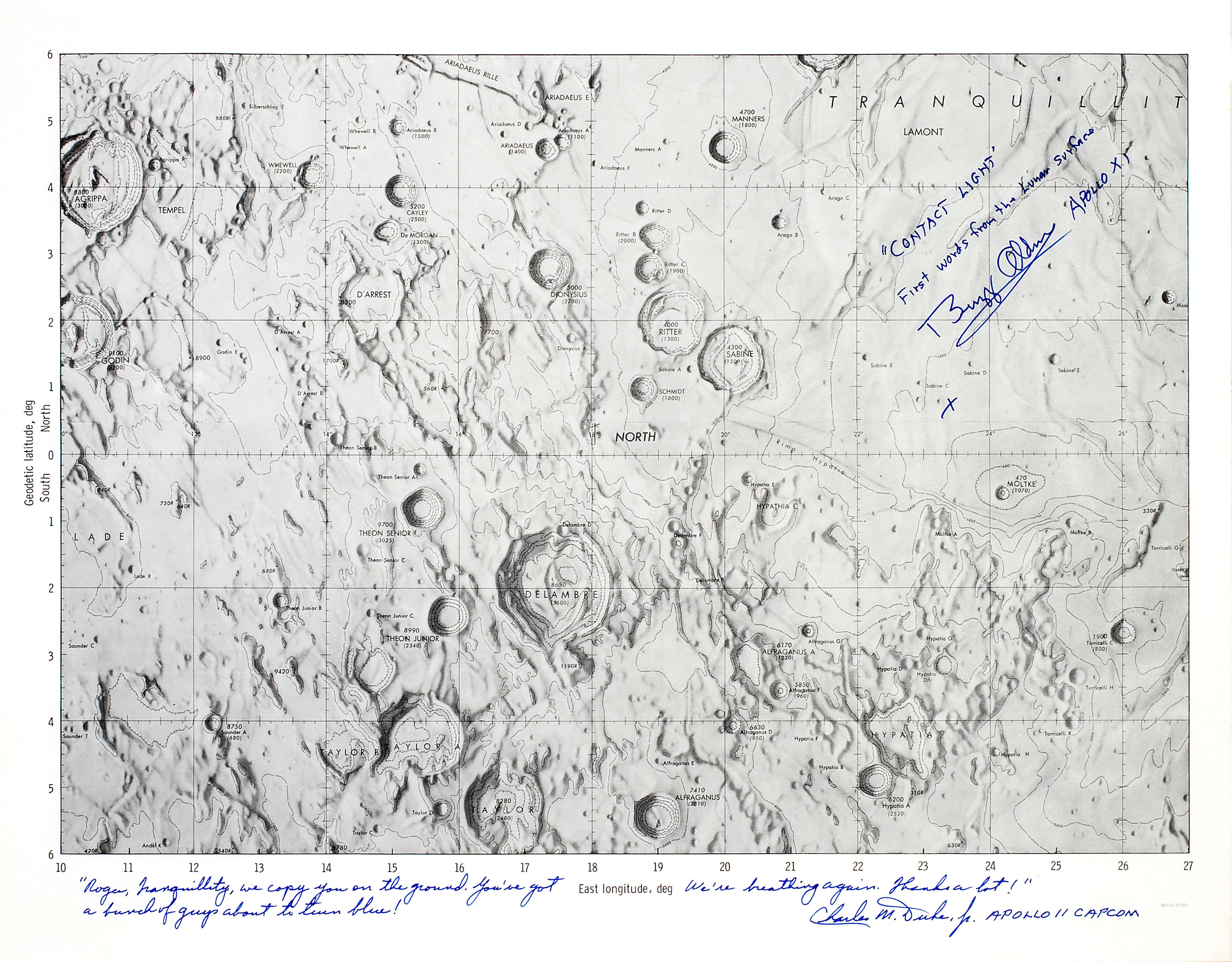

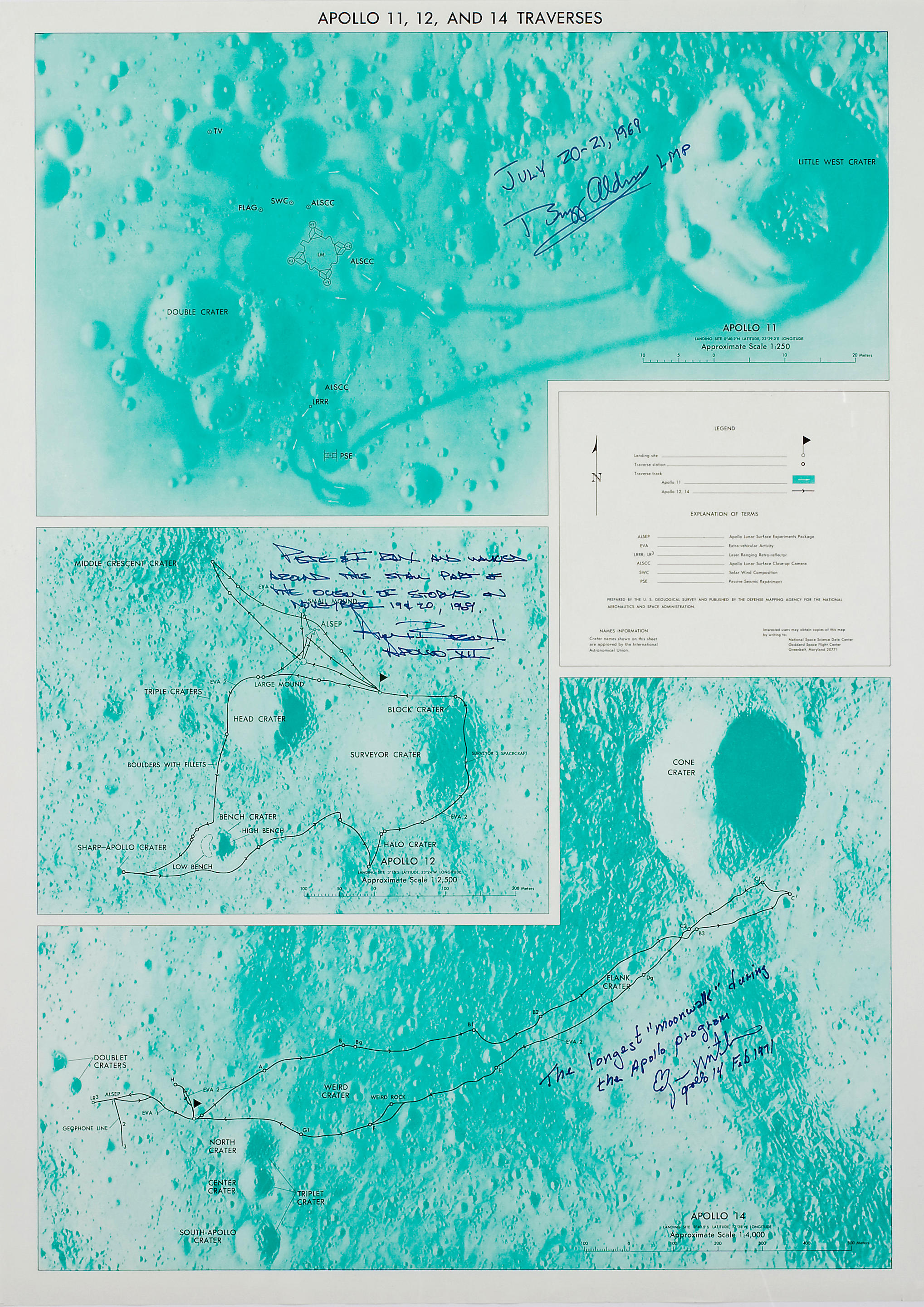
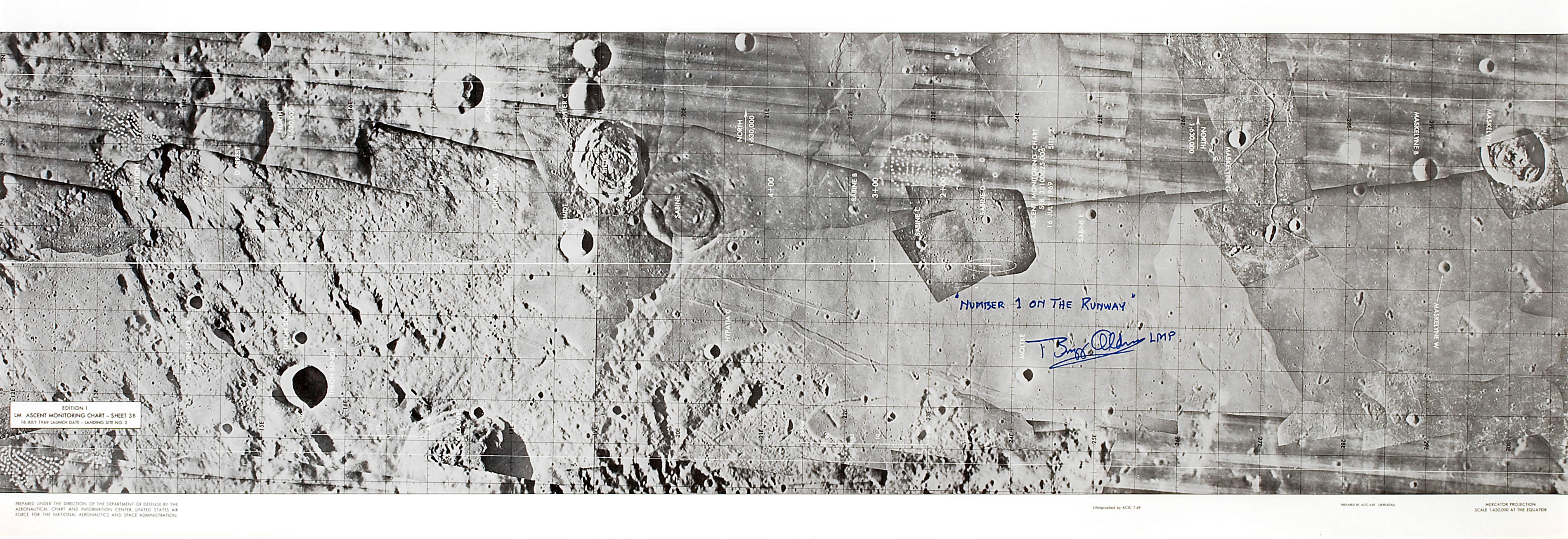
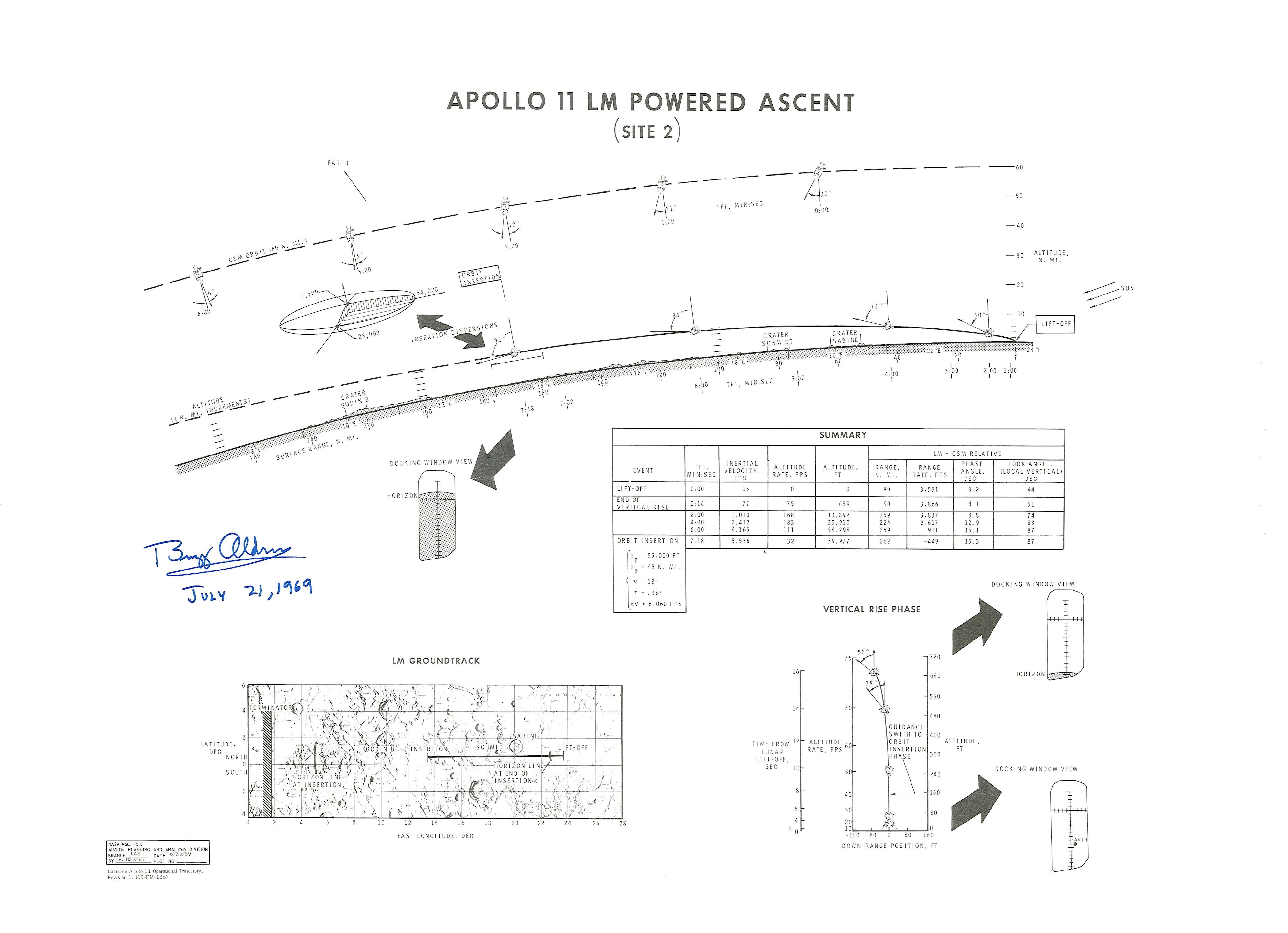
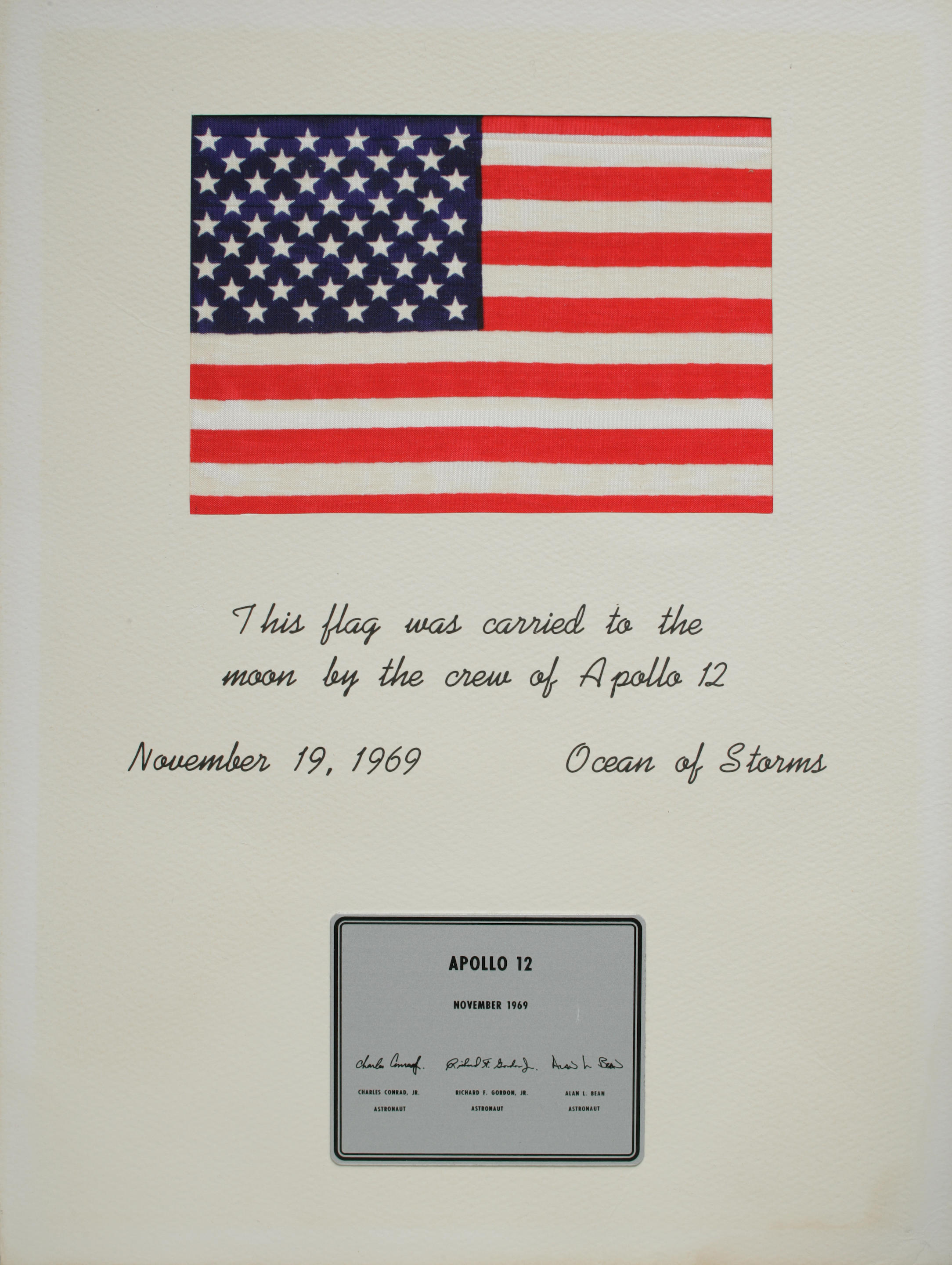
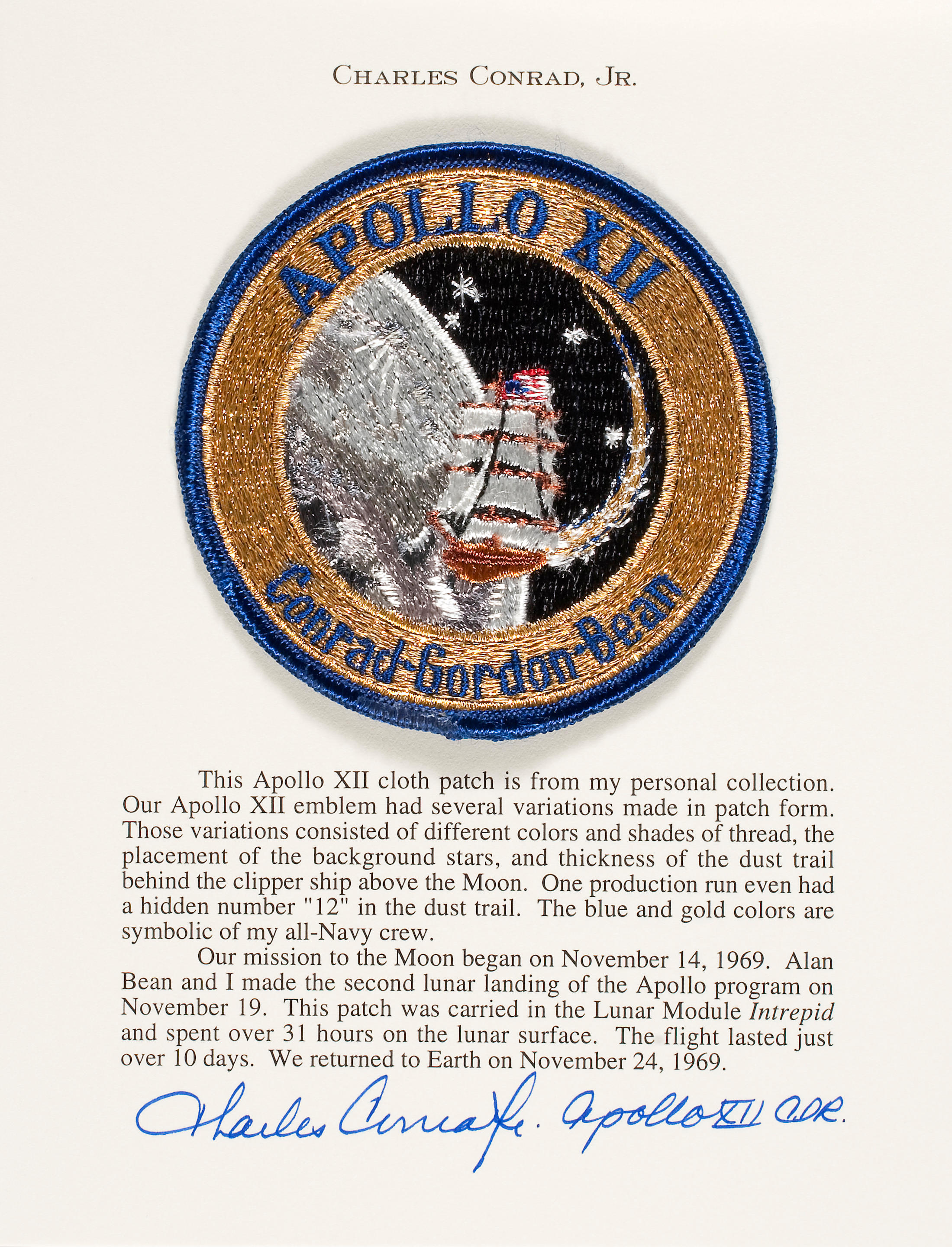
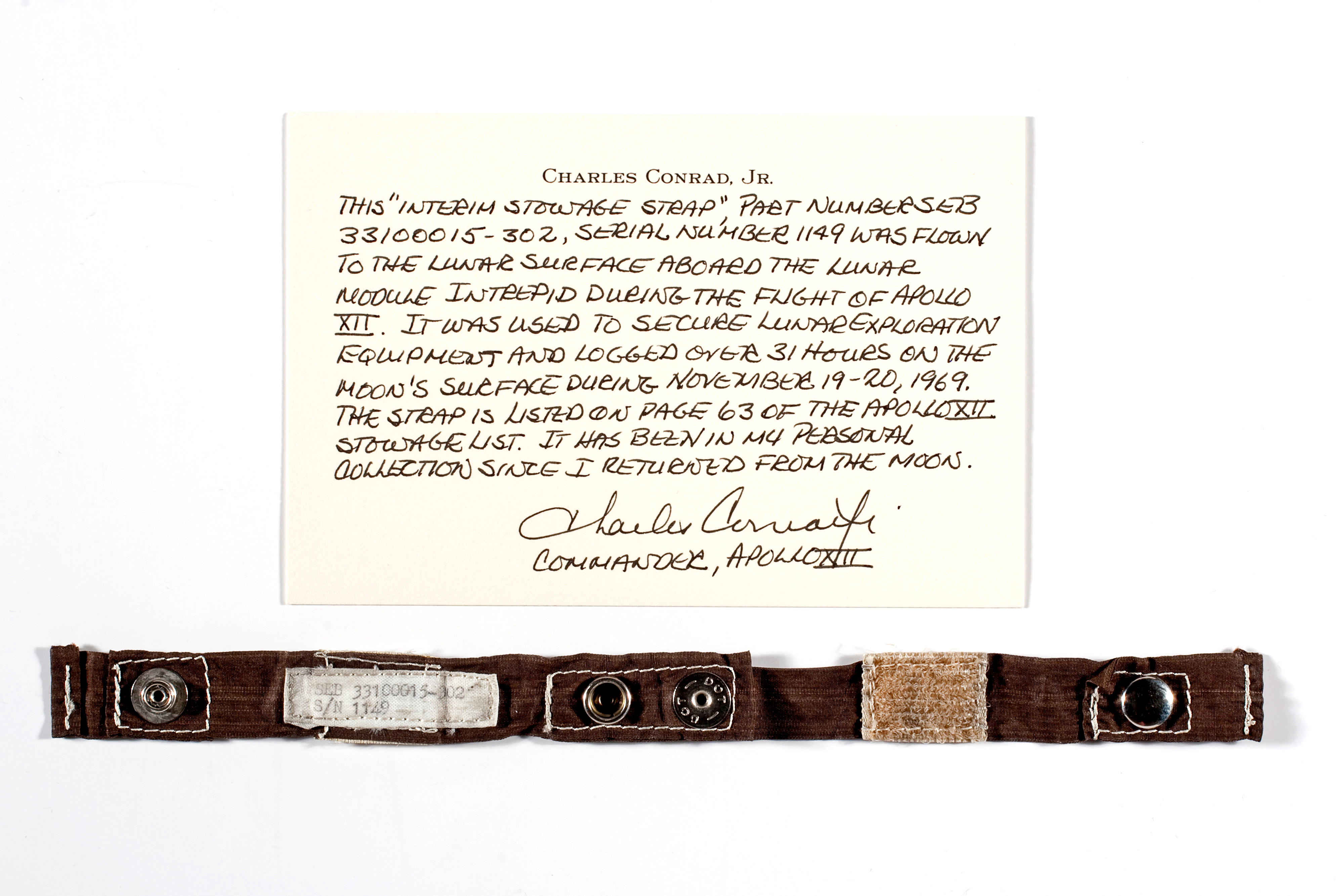
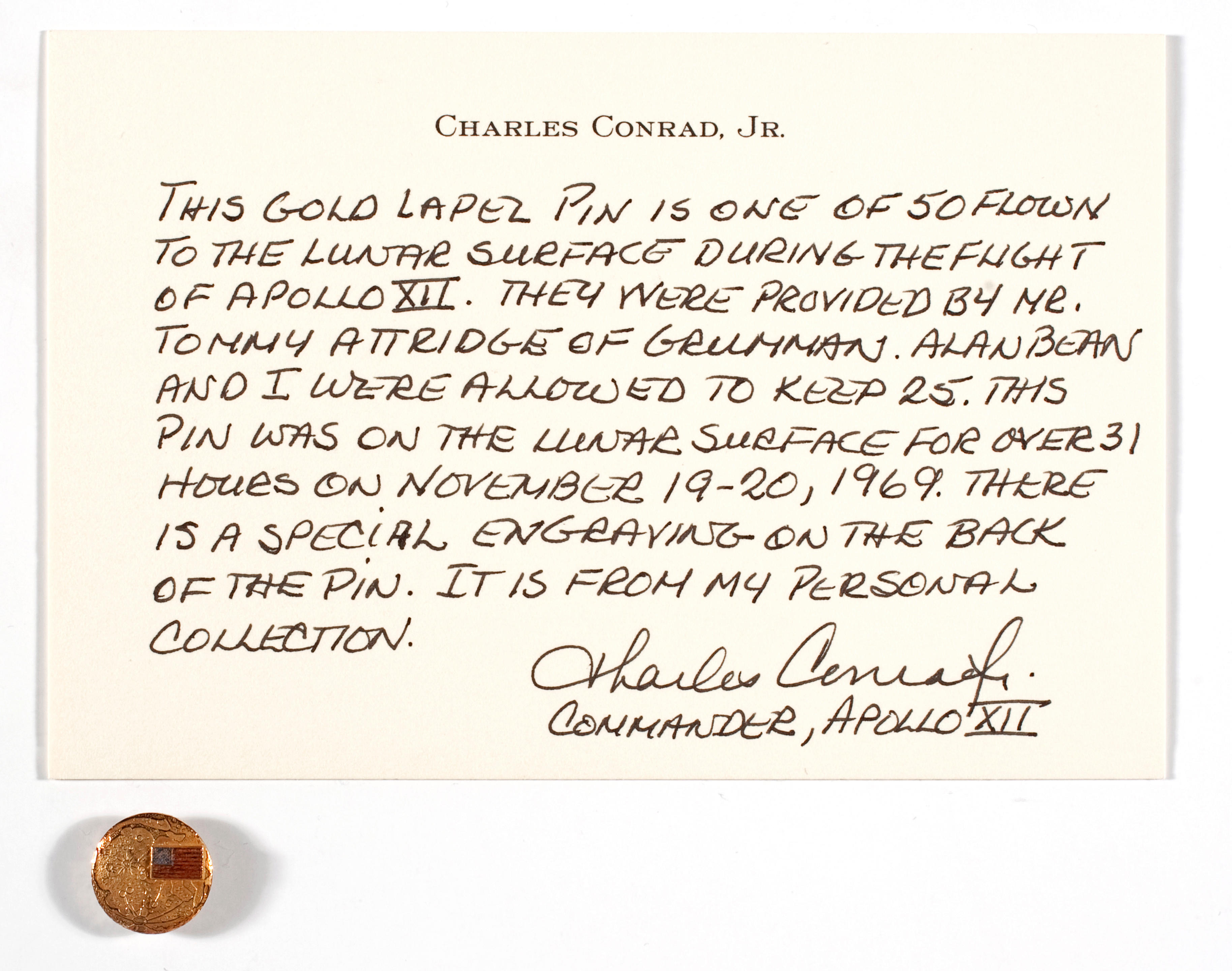
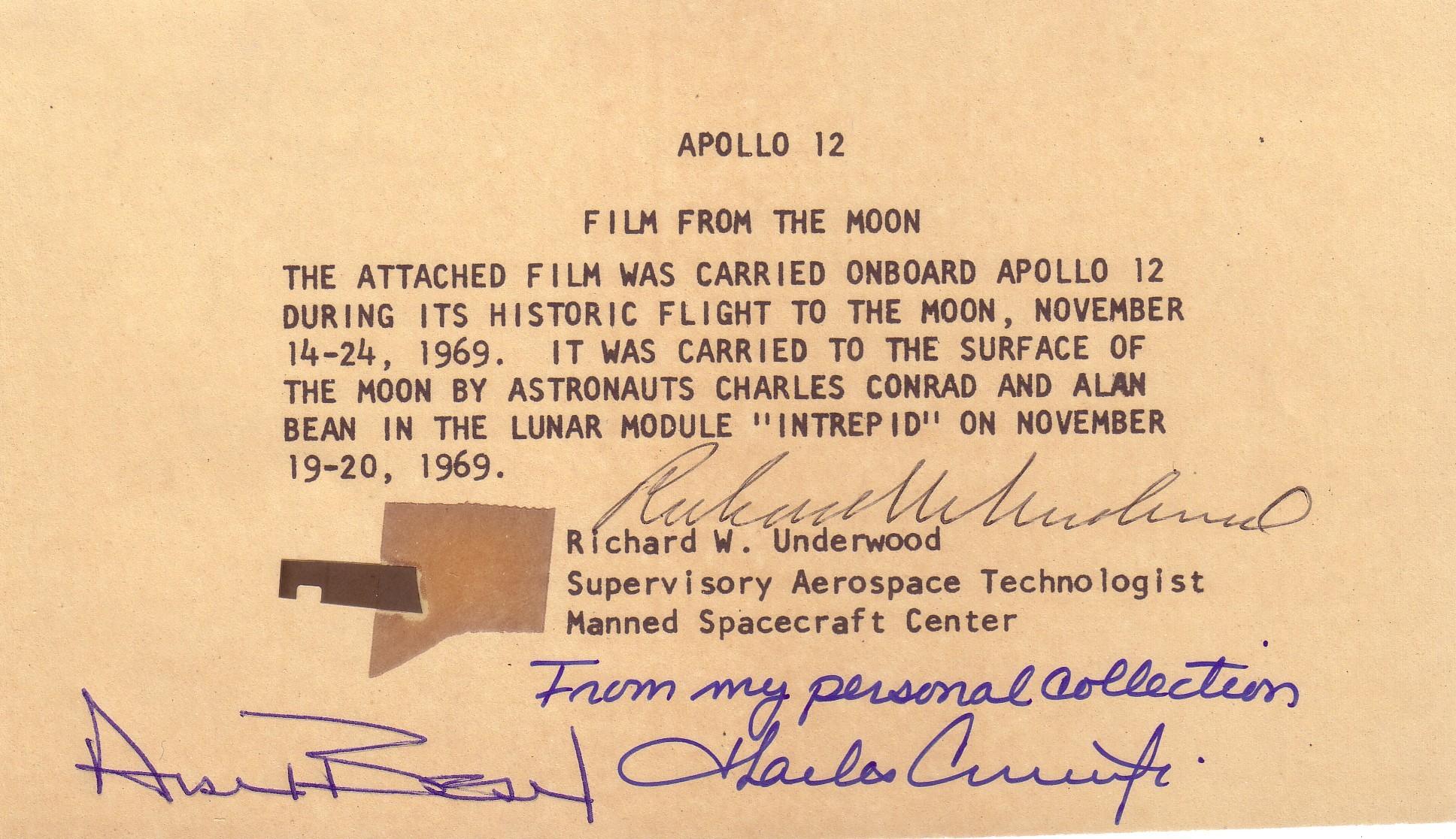


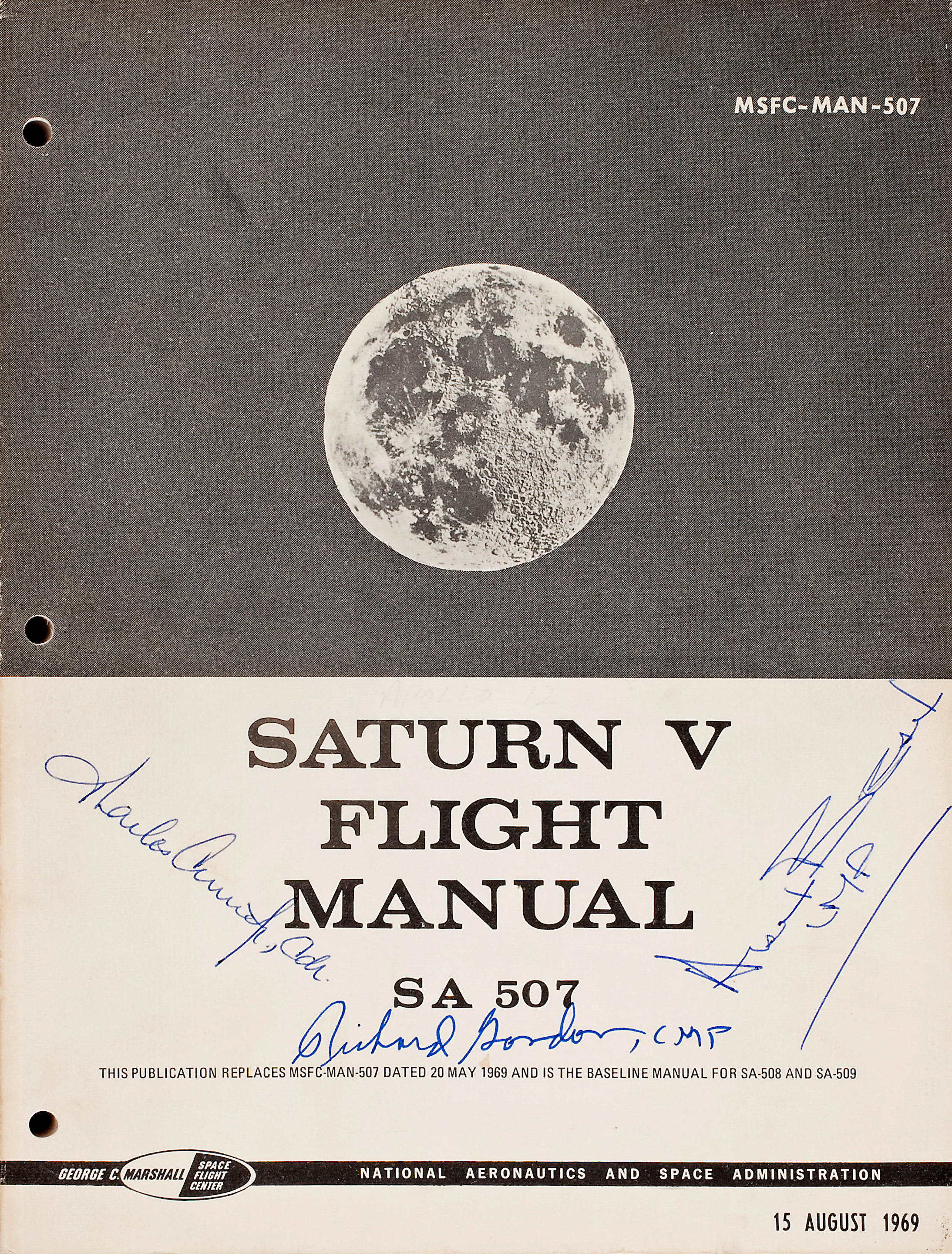
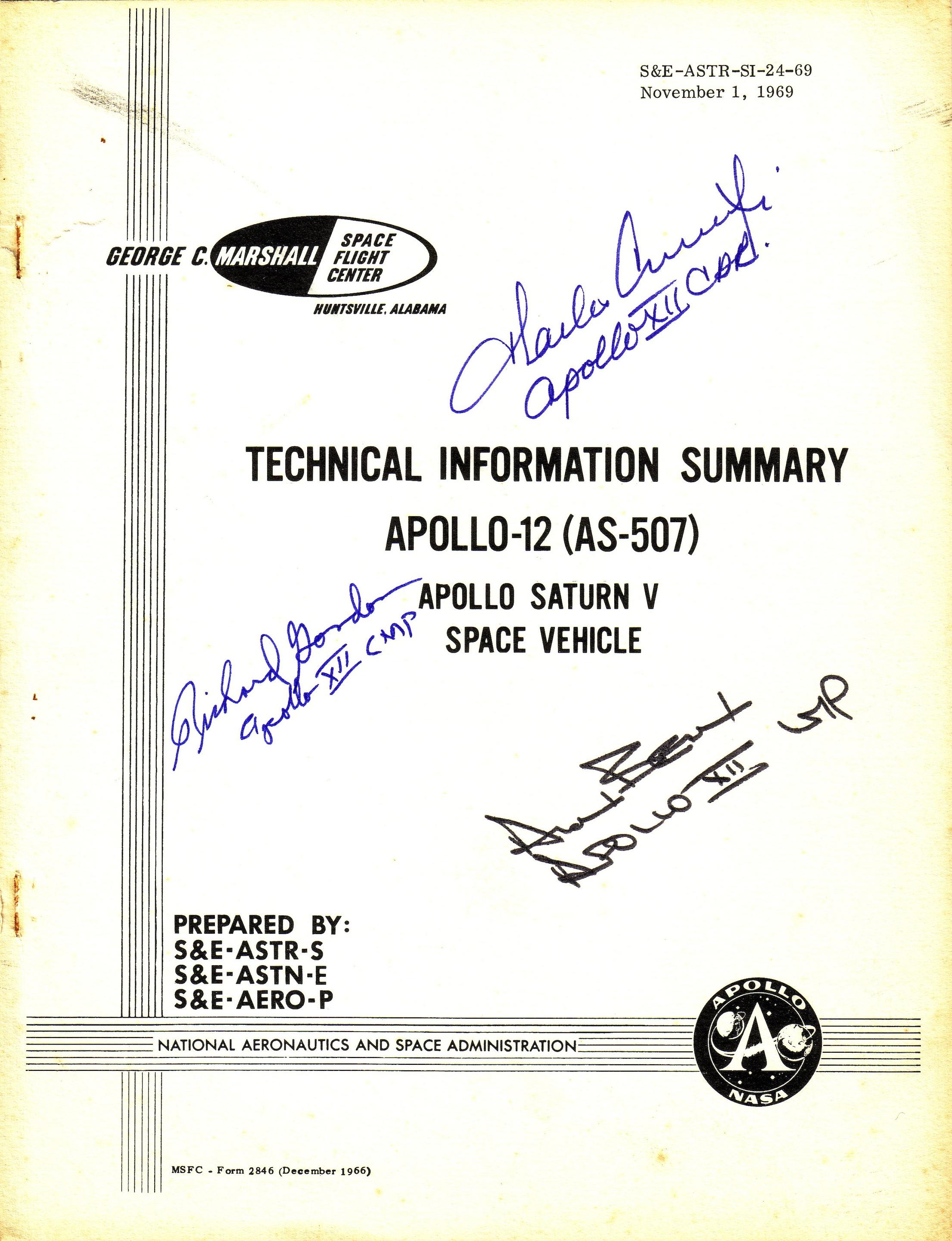

Testen Sie LotSearch und seine Premium-Features 7 Tage - ohne Kosten!
Lassen Sie sich automatisch über neue Objekte in kommenden Auktionen benachrichtigen.
Suchauftrag anlegen